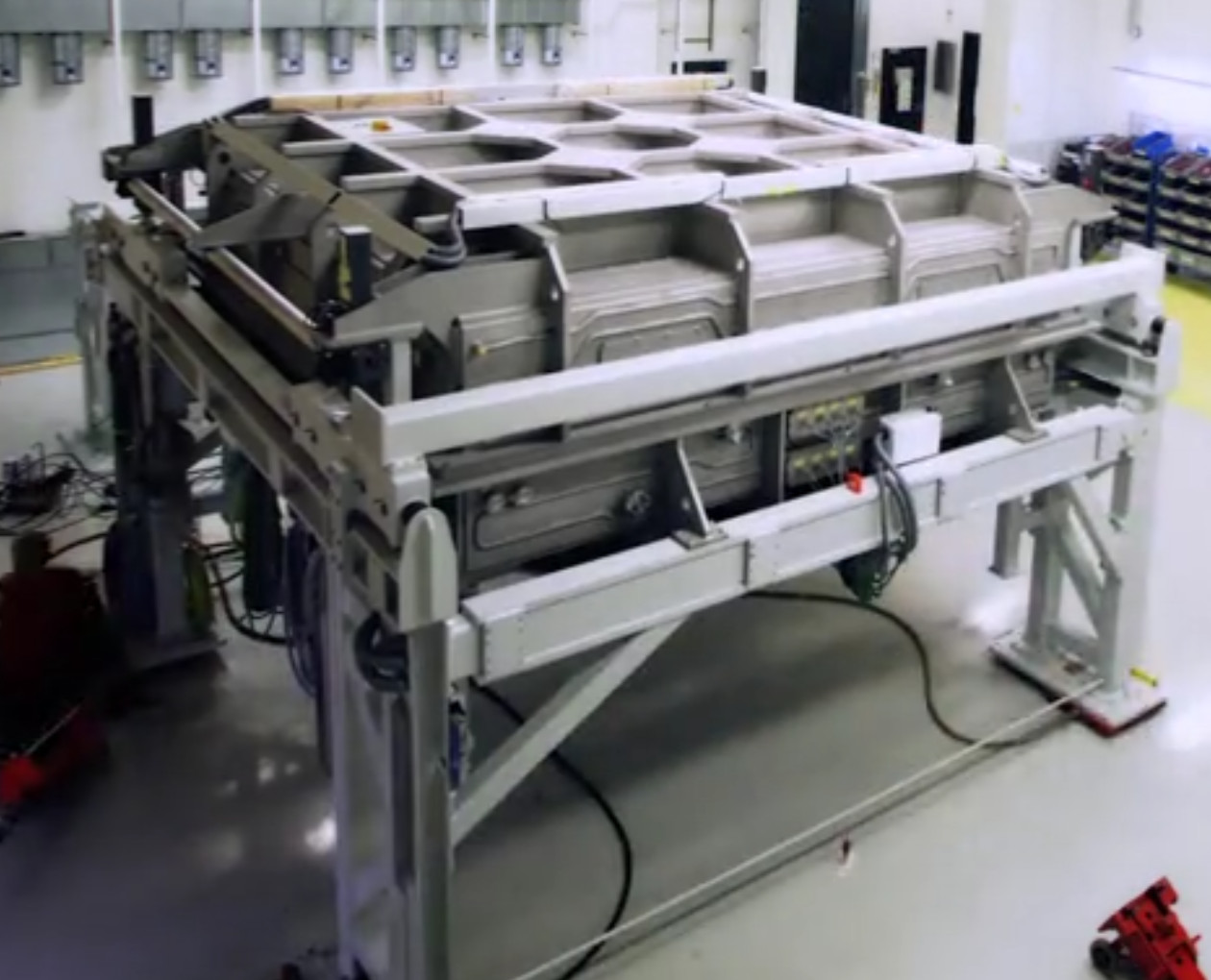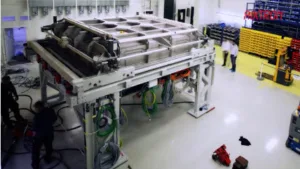To reduce the costs of OLED TV production, producers need to move to Gen 8 size substrates at a minimum. To get there, Aixtron has developed and is now doing demonstration runs on it new OLED deposition tool fully capable of processing Gen 8.5 substrates (2250 mm x 2250 mm).

The tool set creates the OLED frontplane organic stack fabrication part, not the backplane – both of which are critical elements. The tool is massive yet has a compact footprint.

As shown in the video link below, the Gen 8.5 tool set was installed in the company’s development facility in Herzogenrath (near Aachen, Germany) in 2015. The tool set is called the OLAD (Organic Large Area Demonstrator).
http://www.aixtron.com/en/company/specific-topics/why-we-are-working-flat-out-on-oled-technology/
According to Aixtron’s Director of Business Development, Juergen Kreis, “We started first processing last year and have been working on fulfilling the system specs since then. We have had customer visits to the tool already, mostly for demonstration runs that were scheduled as a part of the ramp-up. Now, with the tool being able to show all key features, we plan to have dedicated demo runs with customers starting in Q2.”
The cost of OLED TV production is a critical issue at this time. LG is reported to be losing money on its production of OLED TVs. Samsung recently did an internal evaluation of the LG production process to determine if it should enter the OLED TV space and decided against it because of the cost of production. Can the new Aixtron tool set change this math?
Kreis thinks the Aixtron tool can help in the organic stack fabrication part of the workflow for very large substrates – aimed mainly at TVs. But there are issues in other parts of production that the tool does not address.
Kreis went on to detail the key features of their proprietary Organic Vapor Phase Deposition (OVPD) process, which he believes makes it an excellent production technology for OLED manufacturing:
- Full scalability (2 dimensional deposition on Gen8 size)
- Higher material utilization than vacuum evaporation processes (in Aixtron’s case 70-80% on Gen8)
- Excellent thickness uniformity of deposited films (~+/- 2%)
- High deposition rates on large substrates
Currently, the mainstream approach for organic stack fabrication is Vacuum Thermal Evaporation (VTE). OVPD is an alternative approach first developed by Steven Forrest at Princeton University. Aixtron has built upon this foundation to offer a production grade processing tool set.
Included in the tool is Aixtron’s own source technology STExS (Short Thermal Exposure Source) which enables a precisely measured volume of material, dependent on relevant substrate size and requirements, to be transformed into the gas phase in what it claims is a rapid, material-efficient process.
Compared with conventional VTE, this source technology also enables vaporization to be initiated within just a few seconds and then stopped again once a substrate has been processed. In conjunction with the deposition rates of 50 angstrom/second already achieved, this makes it possible to obtain very short cycle times while also ensuring the lowest possible volumes of material consumption.
A further key role is played here by Aiztron’s Showerhead technology that is used within the OVPD process. This has also been suitably scaled for the demonstrator and – unlike vacuum vaporization – facilitates area-based deposition of the organic layers. The material flows required in the OVPD process are supplied using the STExS source technology. Working at an effective deposition rate of 50 a/sec, a STExS source vaporizes around 40 milligrams per second. At the same time, the patented design scheme ensures that sensitive and costly organic materials are treated with great care.
The tests already performed confirm highly efficient material utilization rates of well over 70 percent. These represent a considerable improvement compared with VTE technology and are thus consistent with the objective of drastically reducing OLED production costs.
“The demonstration capability now achieved by our OLAD demonstrator is an important interim target on the way towards effective and efficient OLED production. We are delighted that we can now provide our customers in the industry with a technology that satisfies all requirements in this respect,” commented Martin Goetzeler, CEO of Aixtron SE.
Aixtron will be at DisplayWeek 2016 if you want to learn more. –CC

